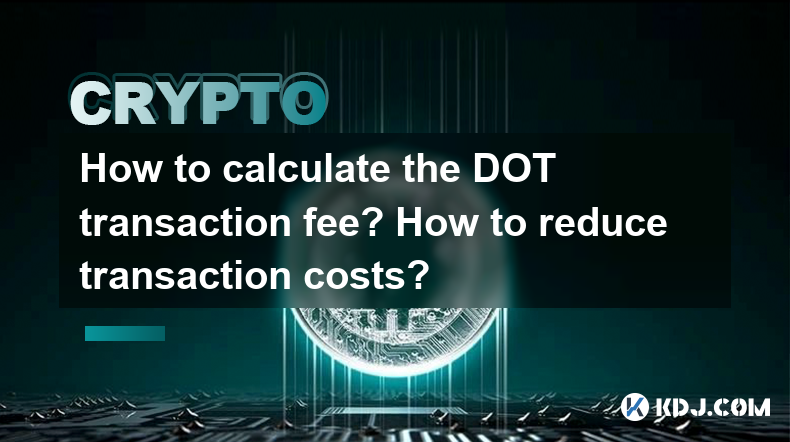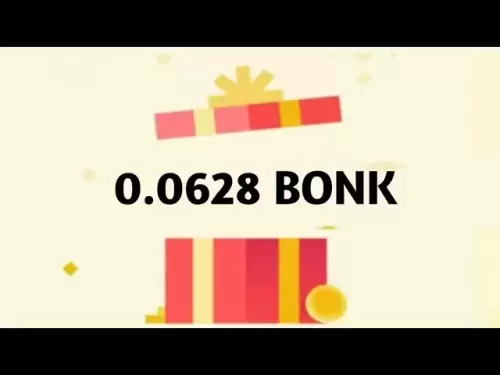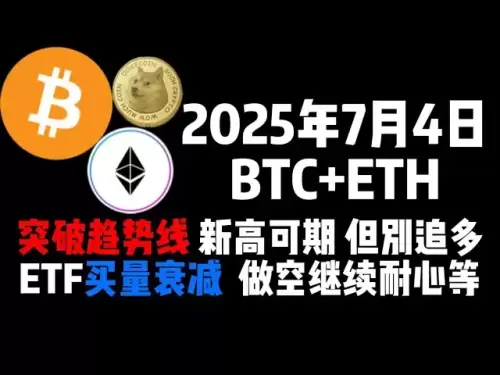-
 Bitcoin
Bitcoin $107,758.1435
-1.45% -
 Ethereum
Ethereum $2,490.6114
-3.32% -
 Tether USDt
Tether USDt $1.0004
0.00% -
 XRP
XRP $2.2042
-2.04% -
 BNB
BNB $651.4818
-1.12% -
 Solana
Solana $145.8782
-3.02% -
 USDC
USDC $0.9999
0.00% -
 TRON
TRON $0.2819
-1.39% -
 Dogecoin
Dogecoin $0.1621
-4.58% -
 Cardano
Cardano $0.5658
-4.18% -
 Hyperliquid
Hyperliquid $37.8181
-6.63% -
 Sui
Sui $2.8404
-4.91% -
 Bitcoin Cash
Bitcoin Cash $481.3703
-2.30% -
 Chainlink
Chainlink $13.0043
-4.79% -
 UNUS SED LEO
UNUS SED LEO $9.0464
0.26% -
 Avalanche
Avalanche $17.6115
-4.39% -
 Stellar
Stellar $0.2359
-2.11% -
 Toncoin
Toncoin $2.7507
-3.93% -
 Shiba Inu
Shiba Inu $0.0...01126
-4.41% -
 Litecoin
Litecoin $86.1256
-3.27% -
 Hedera
Hedera $0.1530
-3.13% -
 Monero
Monero $312.7785
-2.81% -
 Dai
Dai $1.0000
-0.01% -
 Ethena USDe
Ethena USDe $1.0001
-0.02% -
 Polkadot
Polkadot $3.3287
-5.55% -
 Bitget Token
Bitget Token $4.3840
-4.00% -
 Uniswap
Uniswap $6.8370
-10.63% -
 Pepe
Pepe $0.0...09548
-4.25% -
 Aave
Aave $260.2526
-6.11% -
 Pi
Pi $0.4658
-5.45%
How to calculate the DOT transaction fee? How to reduce transaction costs?
DOT transaction fees on Polkadot depend on network congestion, transaction size, and user-set priority, with tools like Polkadot.js helping manage costs effectively.
May 02, 2025 at 12:56 am

Understanding DOT Transaction Fees
When engaging with the Polkadot network, understanding and managing transaction fees is crucial for users looking to optimize their experience. Transaction fees on the Polkadot network, which uses the native cryptocurrency DOT, are calculated based on several factors including the network's congestion, the size of the transaction, and the priority the user assigns to the transaction. This fee structure ensures that the network remains efficient and that transactions are processed in a timely manner.
Factors Influencing DOT Transaction Fees
The Polkadot network uses a weight-based fee system, where the fee is determined by the computational resources required to process a transaction. Network congestion plays a significant role in fee calculation; during periods of high demand, fees can increase as users compete to have their transactions processed faster. Additionally, transaction size affects the fee, as larger transactions require more resources. Lastly, users can set a priority fee, which influences how quickly their transaction is included in a block.
Calculating Your DOT Transaction Fee
To calculate the transaction fee for a DOT transaction, you need to consider the following steps:
- Determine the transaction weight: This is based on the computational resources needed. For standard transfers, this is usually a fixed amount.
- Check the current network congestion: This information can be found on various Polkadot block explorers or network status websites.
- Set your priority fee: If you want your transaction to be processed quickly, you might set a higher priority fee.
- Use a fee calculator tool: Many online tools and wallets provide an estimate of the transaction fee based on these inputs.
For example, if the base fee for a standard transfer is 0.001 DOT and you set a priority fee of 0.0005 DOT during a period of low network congestion, your total transaction fee would be 0.0015 DOT.
Strategies to Reduce DOT Transaction Costs
Reducing transaction costs on the Polkadot network involves strategic planning and understanding of the network's dynamics. Here are some effective methods:
- Transact during off-peak hours: Network congestion is typically lower during certain times of the day, leading to lower fees.
- Batch transactions: If you need to make multiple transactions, consider batching them into a single transaction to reduce the overall fee.
- Use the appropriate transaction priority: Only set a high priority fee if it's necessary; otherwise, opt for a lower fee to save on costs.
- Monitor and adjust: Keep an eye on the network's congestion and adjust your transaction timing and priority accordingly.
Tools and Resources for Managing DOT Fees
Several tools and resources are available to help users manage their DOT transaction fees effectively. Polkadot.js is a popular web-based interface that allows users to interact with the Polkadot network, including checking current fee estimates. Block explorers like Subscan provide real-time data on network congestion and transaction fees. Additionally, third-party wallets often include built-in fee calculators and recommendations to help users optimize their transaction costs.
Practical Example of Reducing DOT Transaction Fees
Let's walk through a practical example of how to reduce your DOT transaction fees:
- Check network congestion: Use a block explorer like Subscan to see the current network status. If it's low, proceed with your transaction.
- Estimate the fee: Use the fee calculator in your wallet or on Polkadot.js to get an estimate of the fee based on the current network conditions.
- Adjust the priority: If you're not in a rush, set a lower priority fee to reduce costs.
- Batch transactions if possible: If you need to send DOT to multiple addresses, consider using a batch transaction to save on fees.
- Execute the transaction: Once you've optimized your fee settings, go ahead and execute the transaction.
By following these steps, you can effectively manage and potentially reduce your DOT transaction costs.
Frequently Asked Questions
Q: Can I get a refund if the network congestion decreases after I've set a high priority fee?
A: No, once a transaction fee is set and the transaction is processed, the fee cannot be refunded. It's important to monitor network conditions closely before setting your fee.
Q: Are there any services that automatically adjust my DOT transaction fees based on network conditions?
A: Some advanced wallets and services might offer features that automatically adjust fees based on network conditions, but these are not standard. It's always best to manually check and adjust your fees for optimal cost management.
Q: How often do DOT transaction fees fluctuate?
A: DOT transaction fees can fluctuate frequently, often changing from block to block based on network demand. It's advisable to check the current fee estimates right before you plan to make a transaction.
Q: Is there a minimum transaction fee for DOT transactions?
A: Yes, there is a minimum transaction fee set by the Polkadot network to ensure that transactions are processed. This minimum fee can vary based on network upgrades and changes in protocol settings.
Disclaimer:info@kdj.com
The information provided is not trading advice. kdj.com does not assume any responsibility for any investments made based on the information provided in this article. Cryptocurrencies are highly volatile and it is highly recommended that you invest with caution after thorough research!
If you believe that the content used on this website infringes your copyright, please contact us immediately (info@kdj.com) and we will delete it promptly.
- Bitcoin's Pattern Break: Are HODLers the Key to the Next Surge?
- 2025-07-04 18:50:12
- Bitcoin Price, Trump's Bill, and the $150K Dream: A NYC Take
- 2025-07-04 19:50:12
- Ethereum, LILPEPE, and the July Bounce: Will Pepe Steal ETH's Thunder?
- 2025-07-04 19:10:12
- Binance Institutional Loans: Unlocking 4x Leverage and Zero Interest for Whales
- 2025-07-04 19:15:12
- Bitcoin Bull Run: Analysts Eye Peak in Late 2025?
- 2025-07-04 19:20:13
- Pepe Indicators, Bullish Forecast: Can the Meme Coin Rally?
- 2025-07-04 19:25:12
Related knowledge

How to customize USDT TRC20 mining fees? Flexible adjustment tutorial
Jun 13,2025 at 01:42am
Understanding USDT TRC20 Mining FeesMining fees on the TRON (TRC20) network are essential for processing transactions. Unlike Bitcoin or Ethereum, where miners directly validate transactions, TRON uses a delegated proof-of-stake (DPoS) mechanism. However, users still need to pay bandwidth and energy fees, which are collectively referred to as 'mining fe...

USDT TRC20 transaction is stuck? Solution summary
Jun 14,2025 at 11:15pm
Understanding USDT TRC20 TransactionsWhen users mention that a USDT TRC20 transaction is stuck, they typically refer to a situation where the transfer of Tether (USDT) on the TRON blockchain has not been confirmed for an extended period. This issue may arise due to various reasons such as network congestion, insufficient transaction fees, or wallet-rela...

How to cancel USDT TRC20 unconfirmed transactions? Operation guide
Jun 13,2025 at 11:01pm
Understanding USDT TRC20 Unconfirmed TransactionsWhen dealing with USDT TRC20 transactions, it’s crucial to understand what an unconfirmed transaction means. An unconfirmed transaction is one that has been broadcasted to the blockchain network but hasn’t yet been included in a block. This typically occurs due to low transaction fees or network congestio...

How to check USDT TRC20 balance? Introduction to multiple query methods
Jun 21,2025 at 02:42am
Understanding USDT TRC20 and Its ImportanceUSDT (Tether) is one of the most widely used stablecoins in the cryptocurrency market. It exists on multiple blockchain networks, including TRC20, which operates on the Tron (TRX) network. Checking your USDT TRC20 balance accurately is crucial for users who hold or transact with this asset. Whether you're sendi...

What to do if USDT TRC20 transfers are congested? Speed up trading skills
Jun 13,2025 at 09:56am
Understanding USDT TRC20 Transfer CongestionWhen transferring USDT TRC20, users may occasionally experience delays or congestion. This typically occurs due to network overload on the TRON blockchain, which hosts the TRC20 version of Tether. Unlike the ERC20 variant (which runs on Ethereum), TRC20 transactions are generally faster and cheaper, but during...

The relationship between USDT TRC20 and TRON chain: technical background analysis
Jun 12,2025 at 01:28pm
What is USDT TRC20?USDT TRC20 refers to the Tether (USDT) token issued on the TRON blockchain using the TRC-20 standard. Unlike the more commonly known ERC-20 version of USDT (which runs on Ethereum), the TRC-20 variant leverages the TRON network's infrastructure for faster and cheaper transactions. The emergence of this version came as part of Tether’s...

How to customize USDT TRC20 mining fees? Flexible adjustment tutorial
Jun 13,2025 at 01:42am
Understanding USDT TRC20 Mining FeesMining fees on the TRON (TRC20) network are essential for processing transactions. Unlike Bitcoin or Ethereum, where miners directly validate transactions, TRON uses a delegated proof-of-stake (DPoS) mechanism. However, users still need to pay bandwidth and energy fees, which are collectively referred to as 'mining fe...

USDT TRC20 transaction is stuck? Solution summary
Jun 14,2025 at 11:15pm
Understanding USDT TRC20 TransactionsWhen users mention that a USDT TRC20 transaction is stuck, they typically refer to a situation where the transfer of Tether (USDT) on the TRON blockchain has not been confirmed for an extended period. This issue may arise due to various reasons such as network congestion, insufficient transaction fees, or wallet-rela...

How to cancel USDT TRC20 unconfirmed transactions? Operation guide
Jun 13,2025 at 11:01pm
Understanding USDT TRC20 Unconfirmed TransactionsWhen dealing with USDT TRC20 transactions, it’s crucial to understand what an unconfirmed transaction means. An unconfirmed transaction is one that has been broadcasted to the blockchain network but hasn’t yet been included in a block. This typically occurs due to low transaction fees or network congestio...

How to check USDT TRC20 balance? Introduction to multiple query methods
Jun 21,2025 at 02:42am
Understanding USDT TRC20 and Its ImportanceUSDT (Tether) is one of the most widely used stablecoins in the cryptocurrency market. It exists on multiple blockchain networks, including TRC20, which operates on the Tron (TRX) network. Checking your USDT TRC20 balance accurately is crucial for users who hold or transact with this asset. Whether you're sendi...

What to do if USDT TRC20 transfers are congested? Speed up trading skills
Jun 13,2025 at 09:56am
Understanding USDT TRC20 Transfer CongestionWhen transferring USDT TRC20, users may occasionally experience delays or congestion. This typically occurs due to network overload on the TRON blockchain, which hosts the TRC20 version of Tether. Unlike the ERC20 variant (which runs on Ethereum), TRC20 transactions are generally faster and cheaper, but during...

The relationship between USDT TRC20 and TRON chain: technical background analysis
Jun 12,2025 at 01:28pm
What is USDT TRC20?USDT TRC20 refers to the Tether (USDT) token issued on the TRON blockchain using the TRC-20 standard. Unlike the more commonly known ERC-20 version of USDT (which runs on Ethereum), the TRC-20 variant leverages the TRON network's infrastructure for faster and cheaper transactions. The emergence of this version came as part of Tether’s...
See all articles

























































































